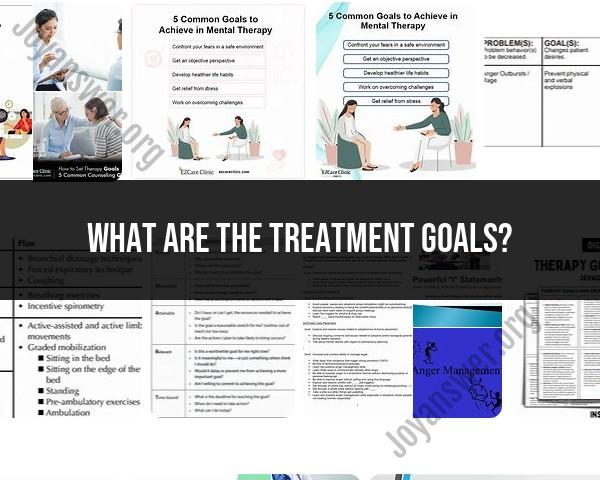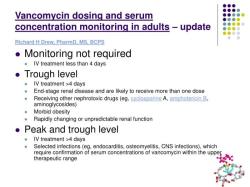What are the treatment goals?
Treatment goals are specific objectives established to guide the care and management of a patient's health condition. These goals are tailored to the individual and aim to achieve the best possible outcomes. Here are the primary treatment goals commonly defined in healthcare:
Symptom Relief: Alleviating symptoms that cause discomfort or distress to improve the patient's quality of life.
Disease Management: Controlling or managing chronic diseases to prevent progression and complications.
Cure or Remission: Achieving complete resolution of the disease or putting it into remission when possible.
Functional Improvement: Enhancing the patient's ability to perform daily activities and improving overall physical and mental functioning.
Preventing Complications: Identifying and mitigating risks to prevent potential complications associated with the disease or its treatment.
Patient Education and Self-Management: Empowering patients with knowledge and skills to manage their condition effectively and make informed decisions about their care.
Emotional and Psychological Support: Addressing emotional and psychological needs to support mental health and well-being.
Adherence to Treatment Plans: Ensuring that patients follow prescribed treatment regimens to achieve the best outcomes.
Quality of Life Improvement: Enhancing overall well-being and life satisfaction through comprehensive care.
Palliative Care: Providing relief from symptoms and stress of serious illness to improve the quality of life for patients and their families, often when curative treatment is no longer an option.
Treatment goals are dynamic and may change over time based on the patient's progress, preferences, and overall health status. Regular review and adjustment of these goals are essential to ensure they remain relevant and achievable.
What specific objectives are targeted during the course of treatment?
The specific objectives of treatment will vary depending on the type of treatment being administered. However, in general, treatment objectives typically target:
Improvement of symptoms: This is a common objective across many treatments, and it refers to reducing the severity or frequency of the presenting problem. For example, in treatment for anxiety, an objective might be to decrease the number of panic attacks a person experiences each week.
Increased functioning: Treatment may aim to improve a person's ability to function in daily life. This could involve improving their ability to work, maintain relationships, or participate in activities they enjoy.
Enhanced skills: Treatment can focus on teaching people new skills to help them manage their condition. These skills might include coping mechanisms, communication skills, or problem-solving strategies.
Improved well-being: Ultimately, treatment often aims to improve a person's overall well-being. This can encompass their physical, mental, and emotional health.
If you'd like to know more about specific treatment objectives for a particular condition, let me know what you're interested in and I can try to find some information.













